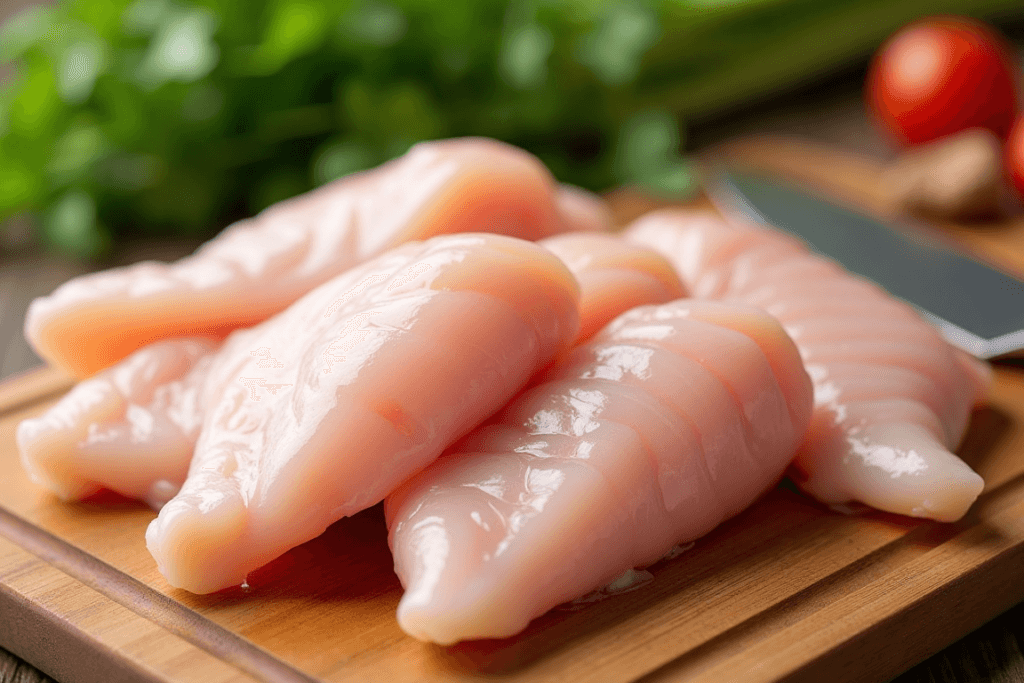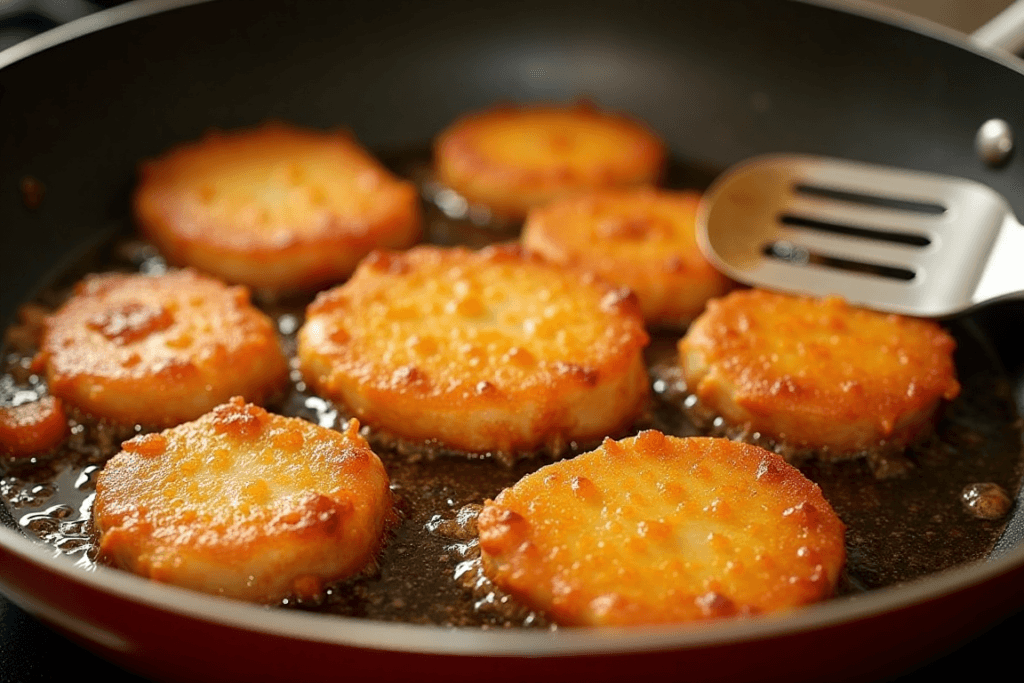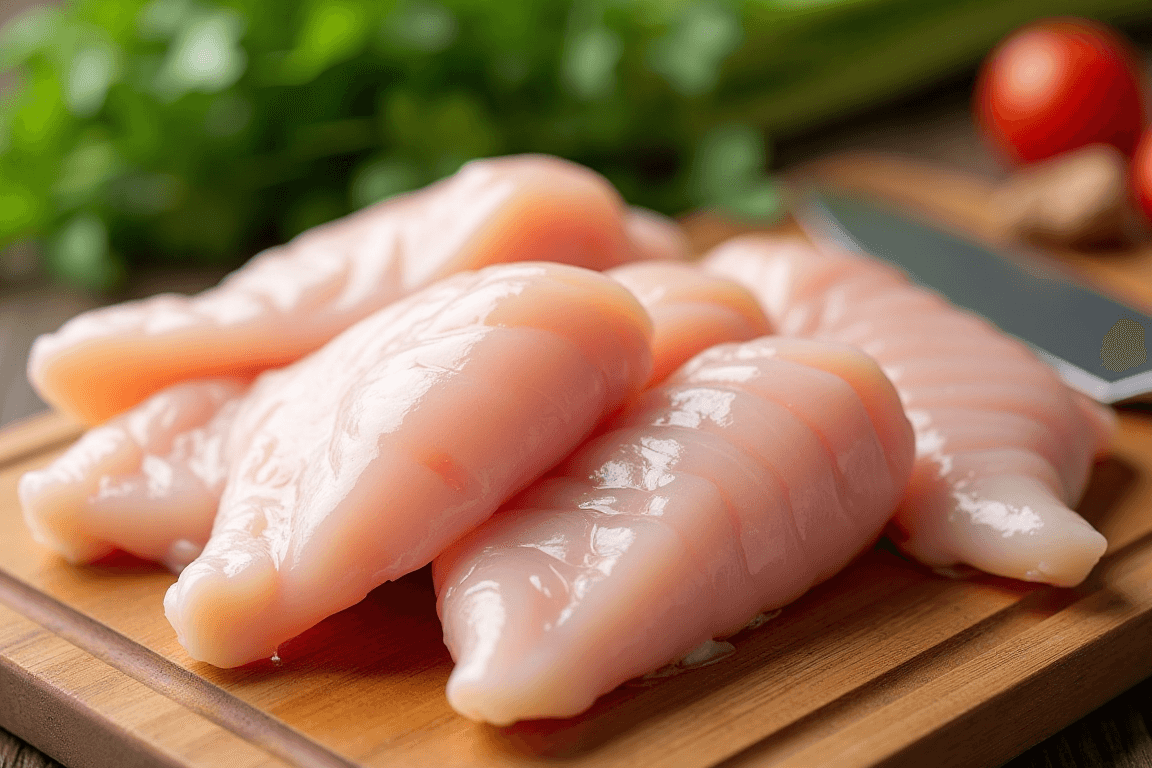Cooking chicken cutlets is like learning the ABCs of comfort food. These thin, tender pieces of chicken are perfect for whipping up a quick dinner, impressing your guests, or simply satisfying your crispy cravings. Whether you’re a kitchen newbie or a seasoned chef, mastering chicken cutlets is a skill worth having in your culinary arsenal. So, what makes chicken cutlets so special? Let’s dive in and find out!
Table of Contents
What Are Chicken Cutlets?
Chicken cutlets are thin slices of chicken breast that are either pounded flat or sliced horizontally to create even thickness. They’re the ultimate blank canvas for flavors, whether breaded and fried to golden perfection or simply seasoned and sautéed for a healthy twist. They cook quickly and adapt to countless recipes, making them a weeknight favorite.

Why Chicken Cutlets Are a Popular Dish
Why do people love chicken cutlets so much? It’s simple: they’re versatile, delicious, and easy to cook. From crispy Parmesan cutlets to spicy buffalo variations, there’s a flavor profile for everyone. Plus, their thin size ensures even cooking, which means no dry chicken—ever. No wonder they’re a star in cuisines worldwide!
Choosing the Right Chicken for Cutlets
Choosing the perfect chicken is like picking the best fruit at a farmer’s market—it requires a little know-how. Not all chicken is created equal, and the cut you choose can make or break your dish.
Best Cuts of Chicken for Cutlets
Chicken breasts are your go-to for cutlets. Why? They’re lean, boneless, and easy to work with. Avoid using thighs or drumsticks, as they’re tougher to slice and don’t give that tender, melt-in-your-mouth texture. If you want to save time, you can even buy pre-sliced chicken cutlets from the store—but where’s the fun in that?
Organic vs. Conventional Chicken: Which to Choose?
Here’s the deal: organic chicken is often free of antibiotics and hormones, which some people prefer for health reasons. It’s also known for better flavor, but it can be pricier. Conventional chicken works just fine too—just make sure to look for fresh, pink meat with no funky smells.
How to Properly Prepare Chicken for Cutlets
Preparation is key to cooking stellar cutlets. First, trim off any excess fat or cartilage. Then, use a sharp knife to slice the chicken breast horizontally into two thinner pieces. Want extra tender cutlets? Place them between two sheets of plastic wrap and gently pound them with a meat mallet until they’re about 1/4 inch thick.
Pro Tip: Always pound your chicken evenly to avoid uneven cooking. Think of it like leveling a cake for perfect frosting!
Essential Tools and Ingredients for Cooking Chicken Cutlets
Before you get cooking, let’s make sure your kitchen is armed with the essentials. Think of this as your chicken cutlet survival kit!
Kitchen Tools You’ll Need
- Meat Mallet: To pound the chicken thin and even.
- Sharp Knife: For clean, precise cuts.
- Mixing Bowls: For breading and seasoning.
- Large Skillet: Perfect for frying or sautéing.
- Tongs: To flip the cutlets without breaking the coating.
Ingredients for Classic Chicken Cutlets
| Ingredient | Quantity |
|---|---|
| Boneless Chicken Breasts | 4 (sliced or pounded thin) |
| All-Purpose Flour | 1 cup |
| Eggs | 2 (beaten) |
| Bread Crumbs | 1 cup |
| Parmesan Cheese | 1/4 cup (grated) |
| Salt and Pepper | To taste |
| Olive Oil | 1/4 cup (for frying) |
Step-by-Step Guide to Preparing Chicken Cutlets
Ready to roll? Here’s your foolproof guide to preparing chicken cutlets that are crispy, flavorful, and utterly irresistible.
How to Pound Chicken for Even Thickness
Place your chicken breast between two sheets of plastic wrap or parchment paper. Grab your trusty meat mallet and gently pound it, starting from the center and working your way out. You’re aiming for a uniform thickness—about 1/4 inch. Why does this matter? Even thickness ensures your chicken cooks evenly, avoiding dry spots or undercooked centers.
Properly Seasoning Your Chicken Cutlets
Think of seasoning as the foundation of flavor. Generously sprinkle both sides of your cutlets with salt, pepper, and any additional spices you love. Want to get fancy? Try adding a pinch of garlic powder, paprika, or Italian seasoning for an extra flavor boost.
Breading Techniques for Crispy Cutlets
Breading is where the magic happens. Here’s how to do it:
- Flour: Dredge the chicken in flour, shaking off any excess.
- Egg Wash: Dip the floured chicken into the beaten eggs, ensuring it’s fully coated.
- Bread Crumbs: Press the chicken into a mixture of bread crumbs and Parmesan cheese, making sure the coating sticks.
Pro Tip: Chill the breaded cutlets in the fridge for 15 minutes before cooking. This helps the coating adhere better.
Cooking Methods for Chicken Cutlets
Once your cutlets are breaded and ready, it’s time to cook! Here are three popular methods to try.

Pan-Frying Chicken Cutlets
Heat olive oil in a large skillet over medium heat. Add the cutlets and cook for 3-4 minutes per side, or until golden brown and cooked through. Don’t overcrowd the pan; give your cutlets room to shine!
Baking Chicken Cutlets in the Oven
Preheat your oven to 400°F (200°C). Arrange the breaded cutlets on a greased baking sheet and spray them lightly with cooking oil. Bake for 20-25 minutes, flipping halfway through, until they’re crispy and cooked through.
Air Fryer Chicken Cutlets: A Healthy Alternative
Place the cutlets in a single layer in your air fryer basket. Cook at 375°F (190°C) for 10-12 minutes, flipping halfway through. You’ll get that signature crispy texture with less oil—win-win!
For additional tips, don’t miss our air fryer guide for chicken cutlets.
Nutrition Facts: A typical chicken cutlet (pan-fried) contains approximately 250 calories, 15g of protein, and 10g of fat.
Common Problems and Solutions When Cooking Chicken Cutlets
Even seasoned cooks can run into hiccups when making chicken cutlets. Don’t worry, though—we’ve got you covered. Here are some common issues and how to fix them so you can cook like a pro.
Why Are My Cutlets Soggy?
Nothing’s more disappointing than soggy cutlets. This usually happens when the oil isn’t hot enough, or the cutlets are overcrowded in the pan. If the oil is too cool, the breading absorbs it like a sponge instead of crisping up. The fix? Heat the oil until it shimmers (about 350°F or 175°C) and fry in batches if necessary.
Quick Tip: Place fried cutlets on a wire rack instead of paper towels to keep them crispy while draining excess oil.
How to Prevent Overcooked or Undercooked Cutlets
Overcooked chicken cutlets can be dry, while undercooked ones are a no-go. The secret? Even thickness and a meat thermometer. Cook the cutlets until the internal temperature reaches 165°F (74°C). If you’re not sure, slice one open to check—it should be white and juicy, not pink.
Avoiding Uneven Breading and Falling-Off Coating
Does your breading peel off like old wallpaper? Here’s why: skipping steps or rushing the process. To avoid this, follow the breading steps carefully (flour, egg, breadcrumbs). Press the coating firmly onto the chicken and chill it before cooking. This extra step works wonders!
Creative Variations of Chicken Cutlets
Once you’ve mastered the classic version, it’s time to get creative. Chicken cutlets are like a blank canvas—perfect for experimenting with bold flavors and fun twists.
Parmesan-Crusted Chicken Cutlets
For an Italian-inspired upgrade, mix grated Parmesan cheese into the breadcrumbs. Serve with marinara sauce and pasta for a quick chicken Parmesan. It’s like Italy on a plate!
Spicy Buffalo Chicken Cutlets
Love heat? Toss your cooked cutlets in buffalo sauce for a spicy kick. Pair them with ranch or blue cheese dressing for the ultimate game-day snack.
Gluten-Free and Keto-Friendly Options
If you’re going gluten-free, swap traditional breadcrumbs for almond flour or crushed gluten-free crackers. Keto enthusiasts can use pork rinds for a crispy, low-carb breading alternative.
How to Serve Chicken Cutlets
Now that your cutlets are cooked to perfection, let’s talk serving ideas. These versatile beauties can shine as the star of the meal or play a supporting role.
Perfect Side Dishes for Chicken Cutlets
Looking for the ideal sidekick? Try mashed potatoes, steamed veggies, or a crisp Caesar salad. For a lighter option, go with a simple cucumber and tomato salad.
Using Chicken Cutlets in Sandwiches and Wraps
Transform your cutlets into a killer sandwich! Layer them on a crusty roll with lettuce, tomato, and mayo for a classic chicken sandwich. Or wrap them in a tortilla with avocado and salsa for a fresh, handheld lunch.
Pairing Chicken Cutlets with Sauces
From tangy honey mustard to creamy garlic aioli, the right sauce can elevate your cutlets. Try out different seasonings to discover your perfect flavor combination.
Pro Tip: Serve your cutlets with a lemon wedge for a bright, zesty finish.
Storing and Reheating Chicken Cutlets
Cooked too many cutlets? No problem. Proper storage and reheating will keep them tasty and fresh for later.
Best Practices for Freezing Cooked Cutlets
Let your cutlets cool completely, then place them in an airtight container or freezer bag. To prevent sticking, separate layers with parchment paper. They can be stored in the freezer for up to 3 months.
How to Reheat Cutlets Without Losing Their Crispiness
Skip the microwave—it’ll make your cutlets soggy. Instead, reheat them in the oven at 375°F (190°C) for about 10 minutes. For extra crispiness, use an air fryer for 5-7 minutes at 350°F (175°C).
Quick Tip: Always thaw frozen cutlets in the fridge overnight before reheating.
Cooked too many cutlets? Learn how to store and reheat chicken cutlets while keeping them crispy and fresh.
Tips for Making Perfect Chicken Cutlets Every Time
Want to nail chicken cutlets every single time? Follow these tried-and-true tips for foolproof results.
Secret Tips for Golden, Crispy Crusts
Swap regular breadcrumbs for panko to achieve a crunchier texture.Another hack? Add a tablespoon of cornstarch to your breading mix—it makes the crust extra crispy.
Enhancing Flavor with Marinades
Marinate your chicken in buttermilk or yogurt for 2-4 hours before breading. It tenderizes the meat and infuses it with subtle, tangy flavor.
Timing and Temperature Best Practices
Don’t rush the process. Cook your cutlets over medium heat to ensure they cook evenly without burning. And always let your cooked cutlets rest for a few minutes before serving to lock in the juices.
Nutrition Facts: Per serving (1 cutlet): 250 calories, 10g fat, 15g protein, 20g carbs (approximate values based on frying method).
Frequently Asked Questions About Chicken Cutlets
Still have questions about chicken cutlets? Here are some common FAQs to clear up any lingering doubts and help you cook like a pro!
Can I Use Pre-Cut Chicken for Cutlets?
Yes, you can! Pre-cut chicken cutlets are a great time-saver. However, they’re often thicker than ideal, so you might need to pound them thinner for even cooking. If you want total control over the thickness, slicing your own chicken breasts is the better option.
What Oils Are Best for Cooking Chicken Cutlets?
The best oils for cooking chicken cutlets are those with a high smoke point, like vegetable oil, canola oil, or avocado oil. Olive oil works too, but it’s better for medium heat cooking due to its lower smoke point. Avoid butter for frying, as it burns quickly and can ruin the flavor.
How Long Do Chicken Cutlets Stay Fresh?
Cooked chicken cutlets can be stored in the refrigerator for up to 4 days in an airtight container. If you’re freezing them, they’ll last for up to 3 months. Just remember to label and date your storage bags for easy tracking!
Quick Tip: When reheating refrigerated cutlets, add a splash of water or broth to keep them moist.
Conclusion: Mastering the Art of Cooking Chicken Cutlets
Chicken cutlets are the ultimate kitchen multitasker. Whether baked, fried, or air-fried, their versatility and flavor make them a favorite. Explore variations, find your signature preparation style, and embrace the joy of cooking. Don’t forget to check out related recipes like thin-sliced chicken breast ideas to expand your repertoire.
Final Thought: Cooking is an art, but it’s also a journey. Every cutlet you make brings you one step closer to becoming a kitchen superstar. Enjoy the process!

